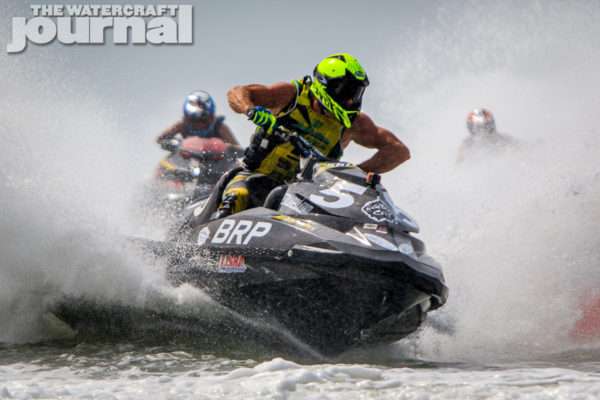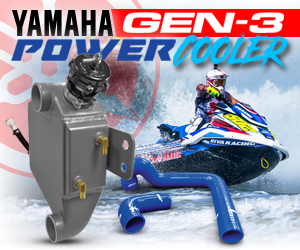
As professional runabout continued to grow more and more competitive, racers were forced to become all the more innovative; finding gray areas, loopholes and outright omissions in the prescribed rule books. Particularly in the Pro Open and GP classes, machines capable of mid-90mph speeds pushed racers to explore new ways to keep planted in the saddle. The g-forces in a particular hairpin turn could easily peel the rider from the seat, no matter how firm a grip he held on the bars.
The trend of building up bolstered backrests, narrowed coves at the knees and hyper-ergonomic saddles placed racers in a virtual Recaro-style race seat, locking their bodies in position as they piloted their all-carbon fiber machines at speeds that would horrify most human beings. These seats were custom-tailored to fit the rider, usually molded in carbon fiber, and wrapped in just enough grippy canvas to not add undue weight to the ski.
Unfortunately, the move also placed racers in danger beyond that of the already perilous race. High-end machines like these have a tendency to break down – and often in spectacular and life-threatening ways. Equally, steering components are under extreme stresses and have snapped within milliseconds.
All of these, as well as accidents, collisions and excessive g-forces in corners all require a rider to be able to freely ejected away – and the IJSBA just ruled that seats such as these inhibit the rider from clearing such dangers. They explain:
Aftermarket Seats may not provide the function to allow a rider to “lock in” to place nor shall these seats provide a saddle function beyond basic contours for riding positions. Specific language will be provided to give Race Directors a guide in prohibiting any seat which does not allow the rider to be freely removed or ejected from a watercraft from a collision or heavy force. All IJSBA Sanctioned Organizers must comply with this rule by January 1, 2020 and this rule will be applied to the 2019 IJSBA World Finals.







